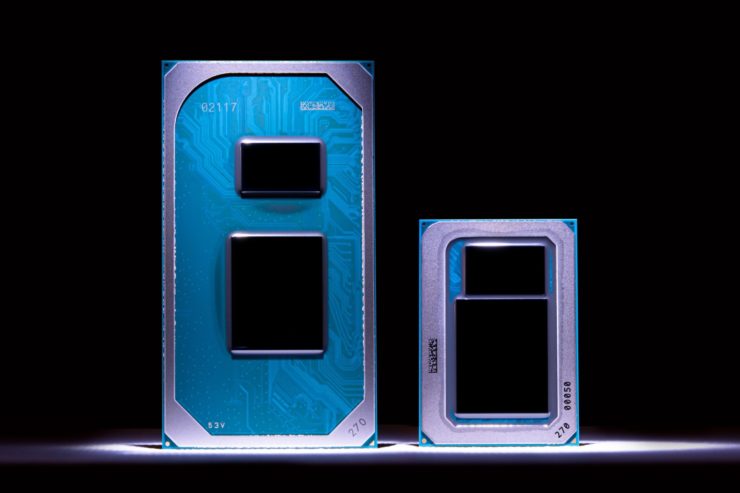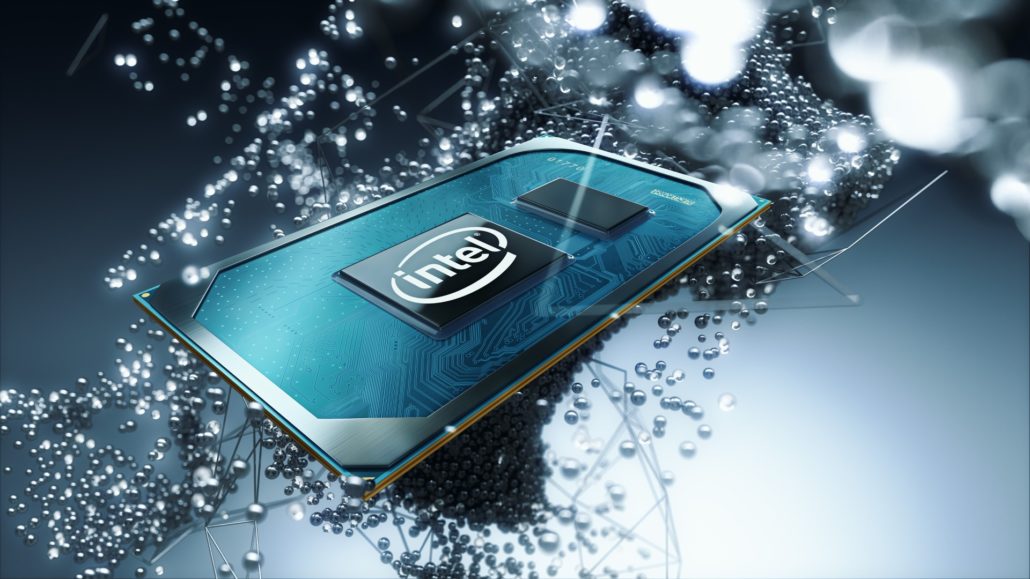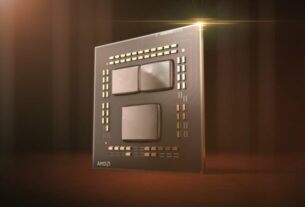
At CES 2020, Intel previewed upcoming mobile PC processors code-named “Tiger Lake.” Tiger Lake’s new capabilities, built on Intel’s 10nm+ process and integrated with new Intel Xe graphics architecture, are expected to deliver massive gains over 10th Gen Intel Core processors. First systems are expected to ship this year. (Credit: Tim Herman/Intel Corporation)
As Intel preps for the launch of its next-generation & 10nm Tiger Lake CPUs for the mainstream notebook segment, its high-performance Tiger Lake CPUs are also in the works for launch in Q1 2021.
Intel Tiger Lake-H High-Performance Notebook CPUs Targetting A Q1 2021 Launch Window, Will Be Positioned Against AMD’s Zen 3 Powered Cezanne Lineup
According to the official documentation from notebook manufacturer, Compal, the Intel Tiger Lake-H series is planned for launch in the first quarter of 2021, that’s nearly two quarters after the Tiger Lake-U series hits store shelves in various notebook configurations. The notebook manufacturer also highlights some key details for the Tiger Lake-H and Tiger Lake-U notebooks which show that Tiger Lake CPUs will be the first mobility chips to feature support for LPDDR5 memory which offers a significant boost in system bandwidth over LPDDR4. With that said, we cannot confirm LPDDR5 memory for Tiger Lake-U CPUs at the moment.
In terms of Intel ’s new products, 14-nanometer high-end products will launch an eight-core 14-nanometer Comet Lake H in the second quarter of 2020, and the mid-range product Rocket Lake will be launched at the end of the fourth quarter of 2020 and will be used to Continue 14nm Nano Comet Lake.
As for 10-nanometer, the eight-core Tiger Lake H for high-end products is expected to be launched in the first quarter of 2011 but the memory only supports DDR4. The mid-range product Tiger Lake UP3 will be launched in the third quarter of 2020. It will support LPDDR5. Low-end CPUs for low-power Chromebooks and small notebook computers are expected to be launched in the fourth quarter of 2020 with Jasper Lake at 10 nm.
Compal (via Videocardz & Momomo_US)

The 11th Generation Tiger Lake Family – Built For Mobile Laptops & Gaming Notebooks
The Intel Tiger Lake CPUs will be termed as the 11th Generation Core family and would be kept exclusive to laptops and gaming notebooks. The lineup would come in three flavors which would include Tiger Lake-Y, Tiger Lake-U, and Tiger Lake-H. There have been several leaks for Tiger Lake-Y and Tiger Lake-U processors which are being internally tested by various OEMs and laptop vendors who would integrate the CPUs in their next-generation devices.
The Tiger Lake-U family would consist of 15-28W TDP CPUs and would feature 4 cores and 8 threads, albeit at much higher clock speeds with boost nearing 4.50 GHz. These CPUs would also feature GT2 tier, Gen 12 Xe GPUs, and would come in the UP3 (BGA 1499) package. Tiger Lake-U will be the first to hit notebooks on 2nd September as reported earlier.

The documents from the manufacturer mention LPDDR5 support for the said family whereas the rest of the lineup will use either LPDDR4(X) memory. We have seen laptops with LPDDR4 and LPDDR4X memory featured alongside the Tiger Lake-U CPUs so we can expect multiple configurations with few higher-end & the more expensive variants offering LPDDR5 support.
Intel Tiger Lake vs AMD Renoir Mobility CPU Comparisons:
| CPU Family Name | Intel Tiger Lake-U | AMD Renoir U-Series |
|---|---|---|
| Family Branding | Intel 11th Gen Core (U-series) | AMD Ryzen 4000 (U-Series) |
| Process Node | 10nm++ | 7nm |
| CPU Core Architecture | Willow Cove | Zen 2 |
| CPU Cores/Threads (Max) | 4/8 | 8/16 |
| Max CPU Clocks | 4.8 GHz (Core i7-1185G7) | 4.2 GHz (Ryzen 7 4800U) |
| GPU Core Architecture | Xe Graphics Engine | Vega Enhanced 7nm |
| Max GPU Cores | 96 EUs (768 cores) | 8 CUs (512 cores) |
| Max GPU Clocks | 1350 MHz | 1750 MHz |
| TDP (cTDP Down/Up) | 15W (12W-28W) | 15W (10W-25W) |
| Launch | Mid 2020 | March 2020 |
The Tiger Lake-Y family would consist of 4.5-9W TDP CPUs and would feature up to 4 cores and 8 threads. The GPU side would include a GT2 tier, Gen 12 Xe GPU. The Tiger Lake-Y processors will come in the UP4 (BGA 1598) package. The Tiger Lake-Y family would exclusively support LPDDR4X memory.

Then there’s the high-performance Tiger Lake-H lineup that would consist of up to 8 core and 16 thread chips based on the new Willow Cove architecture. The CPUs would carry up to 34 MB of cache that’s 24 MB L3 (3 MB L3 per core) and 10 MB L2 (1.25 MB per core). Tiger Lake CPUs will come with an asymmetrical 48/32 KB L1 cache and will fully support AVX2 & AVX-512 instructions. Tiger Lake-H CPUs would additionally feature Two-Level Memory (2LM) and SGX (Software Guard Extensions). Intel’s Tiger Lake-H family would support DDR4 speeds up to 3200 MHz.
Intel Tiger Lake-H vs AMD Ryzen H-Series High-Performance CPU Comparisons:
| CPU Family Name | Intel Tiger Lake-H | AMD Renoir H-Series | AMD Cezanne-H Series |
|---|---|---|---|
| Family Branding | Intel 11th Gen Core (H-series) | AMD Ryzen 4000 (H-Series) | AMD Ryzen 5000 (H-Series) |
| Process Node | 10nm | 7nm | 7nm+ |
| CPU Core Architecture | Willow Cove | Zen 2 | Zen 3 |
| CPU Cores/Threads (Max) | 8/16 | 8/16 | 8/16 |
| L2 Cache (Max) | 10 MB | 4 MB | TBD |
| L3 Cache (Max) | 24 MB | 8 MB | TBD |
| Max CPU Clocks | TBD | 4.3 GHz (Ryzen 9 4900HS) | TBD |
| GPU Core Architecture | Xe Graphics Engine | Vega Enhanced 7nm | Vega Enhanced 7nm |
| Max GPU Cores | 96 EUs (768 cores)? | 8 CUs (512 cores) | 8 CUs (512 cores)? |
| Max GPU Clocks | TBD | 1750 MHz | TBD |
| TDP (cTDP Down/Up) | 35W (65W cTDP) | 35W (45W cTDP) | 35W (45W cTDP) |
| Launch | Q1 2021 | Q2 2020 | Q2 2021? |
As per previous reports, the Tiger Lake-H CPUs will ship with TDPs ranging from 35W to 45W. The Tiger Lake-U CPUs will range from 15W-28W while Tiger Lake-Y TDPs will range from 12W-25W. The Intel Tiger Lake-U and Tiger Lake-Y CPU lineups will be competing against AMD’s Zen 2 powered Ryzen 4000 ‘Renoir’ and Ryzen 5000 ‘Van Gogh’ CPUs while Tiger Lake-H will be launching close to AMD’s Cezanne-H family which is expected to feature the Zen 3 (7nm+) cores with incremental IPC gains and a slew of other features which are yet to be showcased.

The report also mentions another 14nm mobility replacement for Comet Lake-H and Comet Lake-U CPUs in the form of Rocket Lake-H and Rocket Lake-U. According to the details, the 12th Generation Core family would come in Rocket Lake-U 15W and Rocket Lake-S 35-125W flavors. The Rocket Lake-U family would feature up to 6 cores & 12 threads along with GT1 Xe graphics while Rocket Lake-H family would feature up to 8 cores and 16 threads with GT1 Xe graphics. Only Rocket Lake-U CPUs would come with SGX while both variants would support AVX2 / AVX-512 instructions. Rocket Lake-S would natively support DDR4-2933 MHz ram & Rocket Lake-U would support DDR4-2933 & LPDDR4X-3733 MHz memory.
Intel Desktop CPU Generations Comparison:
| Intel CPU Family | Processor Process | Processors Cores (Max) | TDPs | Platform Chipset | Platform | Memory Support | PCIe Support | Launch |
|---|---|---|---|---|---|---|---|---|
| Sandy Bridge (2nd Gen) | 32nm | 4/8 | 35-95W | 6-Series | LGA 1155 | DDR3 | PCIe Gen 2.0 | 2011 |
| Ivy Bridge (3rd Gen) | 22nm | 4/8 | 35-77W | 7-Series | LGA 1155 | DDR3 | PCIe Gen 3.0 | 2012 |
| Haswell (4th Gen) | 22nm | 4/8 | 35-84W | 8-Series | LGA 1150 | DDR3 | PCIe Gen 3.0 | 2013-2014 |
| Broadwell (5th Gen) | 14nm | 4/8 | 65-65W | 9-Series | LGA 1150 | DDR3 | PCIe Gen 3.0 | 2015 |
| Skylake (6th Gen) | 14nm | 4/8 | 35-91W | 100-Series | LGA 1151 | DDR4 | PCIe Gen 3.0 | 2015 |
| Kaby Lake (7th Gen) | 14nm | 4/8 | 35-91W | 200-Series | LGA 1151 | DDR4 | PCIe Gen 3.0 | 2017 |
| Coffee Lake (8th Gen) | 14nm | 6/12 | 35-95W | 300-Series | LGA 1151 | DDR4 | PCIe Gen 3.0 | 2017 |
| Coffee Lake (9th Gen) | 14nm | 8/16 | 35-95W | 300-Series | LGA 1151 | DDR4 | PCIe Gen 3.0 | 2018 |
| Comet Lake (10th Gen) | 14nm | 10/20 | 35-125W | 400-Series | LGA 1200 | DDR4 | PCIe Gen 3.0 | 2020 |
| Rocket Lake (11th Gen) | 14nm | 8/16 | TBA | 500-Series | LGA 1200 | DDR4 | PCIe Gen 4.0 | 2021 |
| Alder Lake (12th Gen) | 10nm? | 16/24? | TBA | 600 Series? | LGA 1700 | DDR5 | PCIe Gen 5.0? | 2021 |
| Meteor Lake (13th Gen) | 7nm? | TBA | TBA | 700 Series? | LGA 1700 | DDR5 | PCIe Gen 5.0? | 2022? |
| Lunar Lake (14th Gen) | TBA | TBA | TBA | 800 Series? | TBA | DDR5 | PCIe Gen 5.0? | 2023? |
We can expect more details on Tiger Lake-H CPUs at CES 2021 (Digital Only Event) while the Rocket Lake mobility CPUs would gradually be introduced down the line after Intel releases its Tiger Lake CPU lineup in September.



